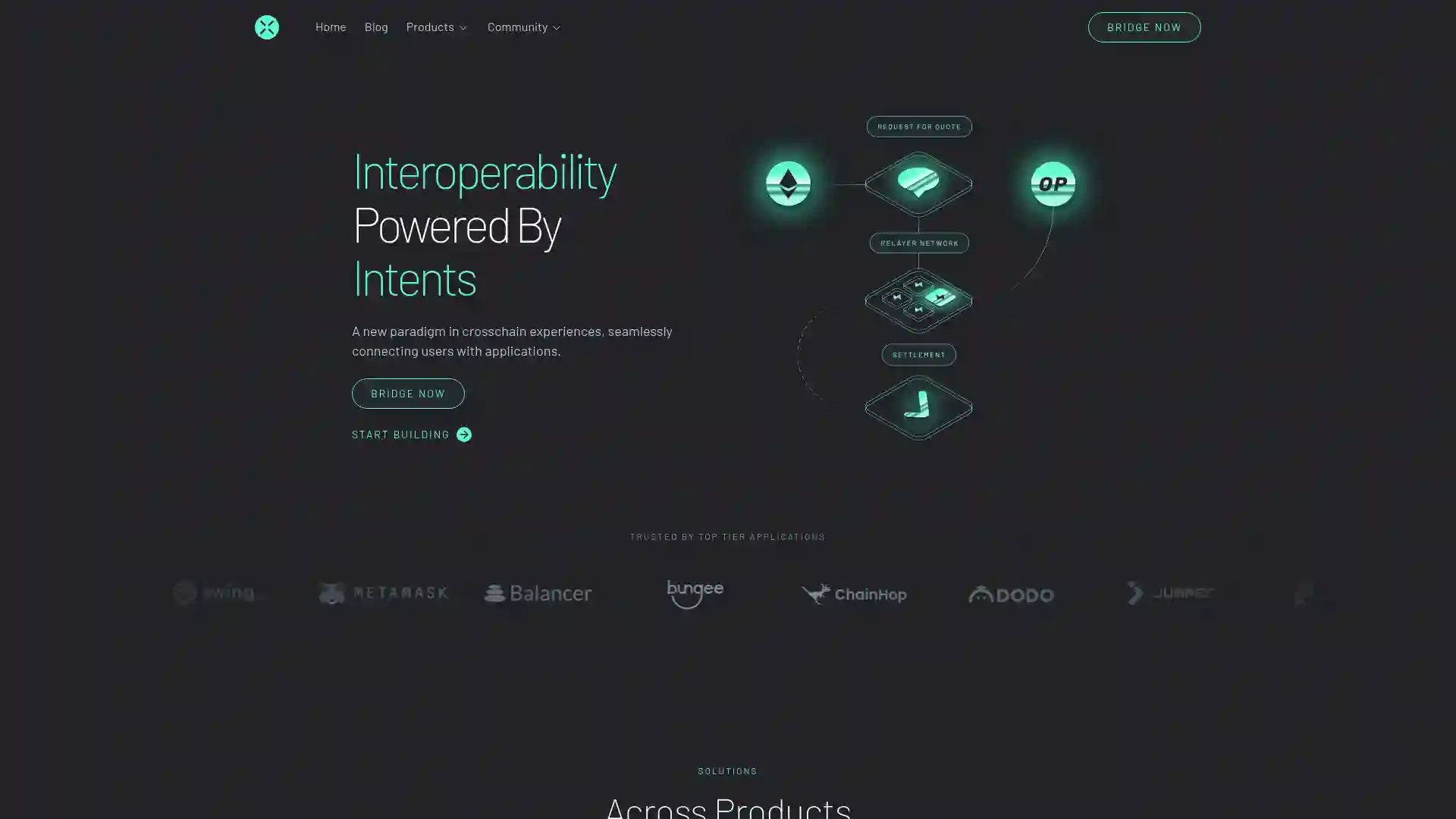Across Protocol (ACX)
In the rapidly evolving world of blockchain technology, the need for seamless interoperability between different blockchain networks has become increasingly apparent. Across Protocol addresses this need by offering an innovative cross-chain token bridge that enables efficient and secure transfers between blockchain ecosystems. Powered by UMA's optimistic oracle, Across Protocol stands out for its emphasis on capital efficiency, security, and user experience.
The architecture of Across Protocol
Leveraging UMA's optimistic oracle
At the heart of Across Protocol is its integration with UMA's optimistic oracle. This oracle is pivotal in ensuring that cross-chain transfers are both fast and secure. The optimistic oracle allows for quick verification of transactions, ensuring that transfers maintain their integrity and reliability. This feature is particularly beneficial for Layer 2 solutions and Roll-Ups, where rapid processing times are crucial.

| Ticker | ACX |
| Category | Polygon Ecosystem |
| Website | https://across.to/ |
| @AcrossProtocol | |
| Contract Addresses | |
|---|---|
| ethereum | 0x44...2f Copied! Copied! |
| polygon-pos | 0xf3...fc Copied! Copied! |
| optimistic-ethereum | 0xff...6b Copied! Copied! |
| boba | 0x96...40 Copied! Copied! |
| arbitrum-one | 0x53...9d Copied! Copied! |
Capital efficiency and liquidity management
Across Protocol is designed with capital efficiency in mind. One of its key innovations is the use of a single liquidity pool. This simplifies the liquidity provision process and enhances the overall efficiency of the protocol. The strategic design of a competitive relayer landscape further ensures that users can enjoy low-cost and swift transactions. Additionally, the no-slippage fee model optimizes the cost-effectiveness of cross-chain transfers, making it an attractive choice for users seeking reliable and efficient operations.
Security and user experience
Eliminating risk for liquidity providers and users
The security of user assets is a fundamental concern in blockchain technology. Across Protocol addresses this by ensuring that liquidity providers (LPs) and users are not exposed to protocol or finality risks. This design choice is crucial in building trust and providing a safe bridging experience. Users can engage with the protocol confidently, knowing that their assets are protected against potential vulnerabilities associated with cross-chain transfers.
Enhancing interoperability
Across Protocol plays a significant role in enhancing interoperability across blockchain networks. It facilitates the seamless transfer of value between different chains, thereby increasing the fluidity and accessibility of digital assets. This capability is crucial for applications such as decentralized finance (DeFi) platforms and non-fungible tokens (NFTs), where cross-chain functionalities can significantly enhance user experiences and broaden market reach.
Applications and partnerships
Enabling DeFi and NFT functionalities
Across Protocol's utility extends beyond just cross-chain token transfers. It plays a crucial role in consolidating liquidity across DeFi platforms, allowing for more efficient capital allocation and usage. Moreover, partnerships, such as with TeleOrdinal, enable cross-chain bidding on NFTs, showcasing the versatility and broad application of the protocol in various blockchain scenarios.
Building a competitive landscape
The protocol's competitive relayer landscape is designed to encourage cost-efficient and rapid transactions. This feature not only reduces the cost and complexity of cross-chain transactions but also fosters a vibrant ecosystem where innovation and efficiency are prioritized.
